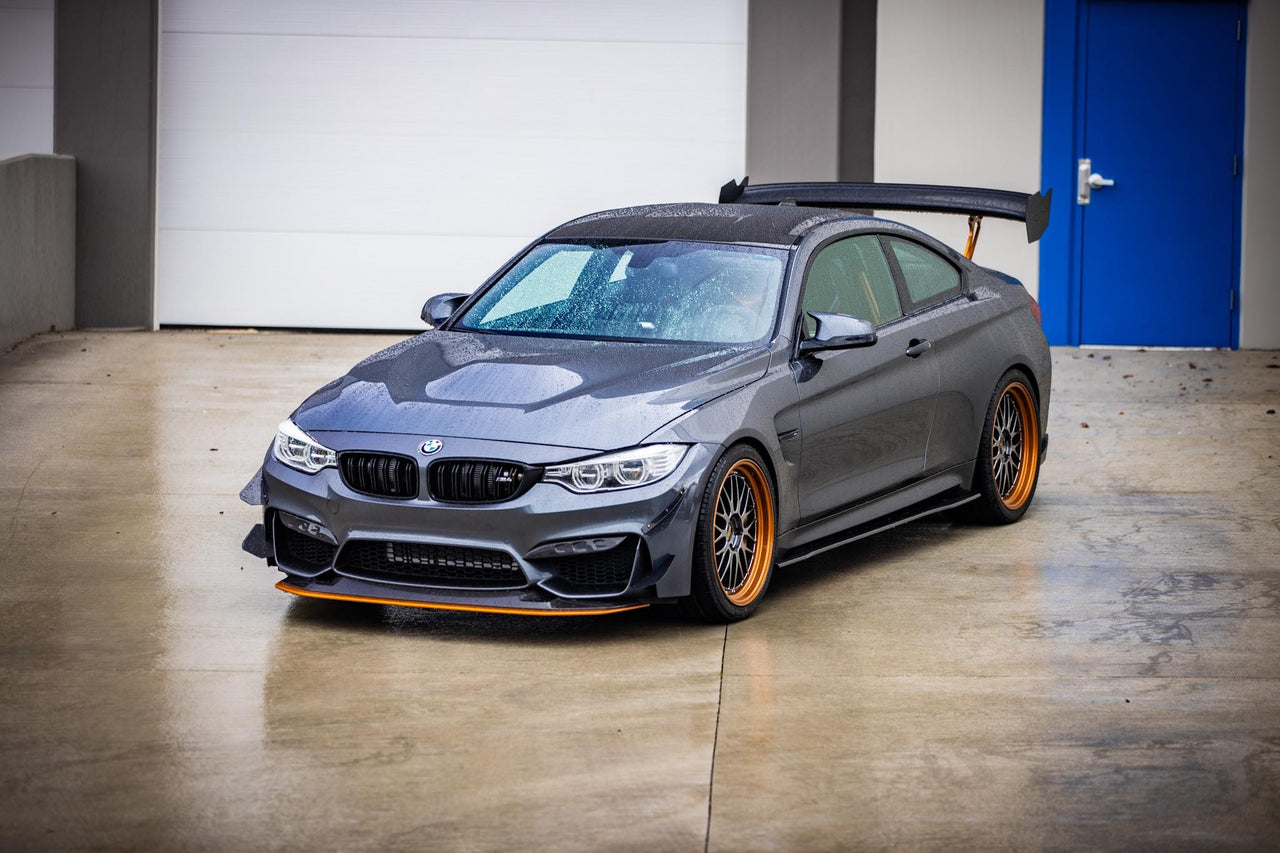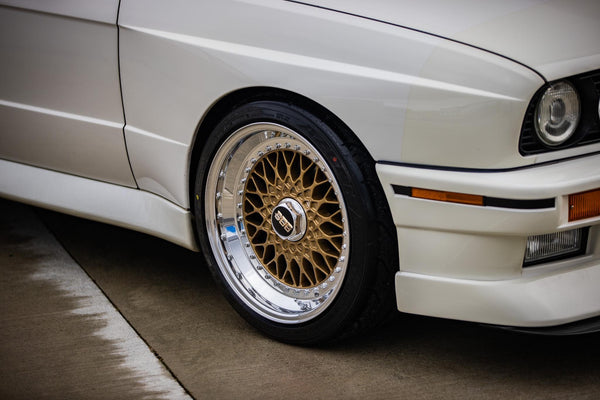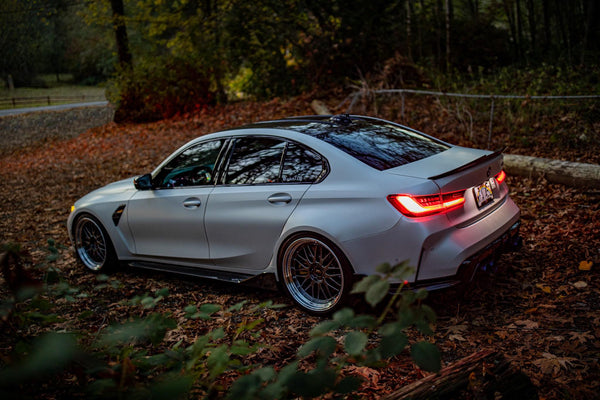Carbon fiber has become synonymous with high-performance and luxury vehicles, adding a touch of elegance and sportiness to their aesthetics. When exploring carbon fiber options for automotive parts, you may come across terms like "wet carbon fiber" and "dry carbon fiber." In this page we will delve into the differences between these two variants and help you make an informed decision when choosing carbon fiber components for your vehicle.
What is Wet Carbon Fiber?
Wet carbon fiber, also known as wet-lay carbon fiber, refers to the manufacturing process where carbon fiber fabric is impregnated with a liquid epoxy resin. This resin is then cured or hardened to create a rigid and durable composite material. Wet carbon fiber parts are typically heavier compared to their dry carbon fiber counterparts due to the resin content. However, they offer excellent strength, flexibility, and impact resistance.What is Dry Carbon Fiber?
A common misconception of Dry carbon fiber is that one may assume the name "Dry" refers to the finish; however, this is not completely correct. Dry carbon fiber is manufactured through a different process known as pre-preg carbon fiber. In this method, carbon fiber fabric is pre-impregnated with resin and then partially cured. The partially cured sheets, also called pre-preg sheets, are stacked together and subjected to high temperature and pressure in an autoclave to complete the curing process. Dry carbon fiber parts are lighter, stiffer, and stronger than wet carbon fiber parts, making them ideal for high-performance applications.Weight and Performance
One of the key differentiating factors between wet carbon fiber and dry carbon fiber is weight. Dry carbon fiber parts are significantly lighter due to the reduced resin content. This weight reduction can contribute to improved acceleration, handling, and overall performance of the vehicle. On the other hand, wet carbon fiber parts, while slightly heavier, offer better impact resistance and are more forgiving in extreme conditions.
Appearance and Finish
Both wet and dry carbon fiber offer a distinctive woven pattern that exudes a sense of luxury and sportiness. However, dry carbon fiber typically has a more pronounced and uniform weave, enhancing its visual appeal. Dry carbon fiber parts often feature a glossy finish, while wet carbon fiber parts may have a matte or semi-gloss finish depending on the specific application.

Cost Considerations
When it comes to cost, dry carbon fiber parts are generally more expensive than wet carbon fiber parts. The intricate manufacturing process and superior performance characteristics of dry carbon fiber contribute to its higher price tag. Wet carbon fiber, on the other hand, offers a more affordable option while still delivering excellent strength and durability.
In conclusion, whether you opt for wet carbon fiber or dry carbon fiber components for your vehicle, both options provide numerous benefits in terms of aesthetics, performance, and durability. Consider your specific needs, budget, and desired level of performance when making a choice. BimmerTrend offers a wide range of carbon fiber parts, including wet and dry variants, to cater to the diverse preferences of BMW enthusiasts. Explore our collection and elevate your driving experience with the unmatched elegance and performance of carbon fiber.
Shop All BimmerTrend Carbon Fiber Parts Here!



